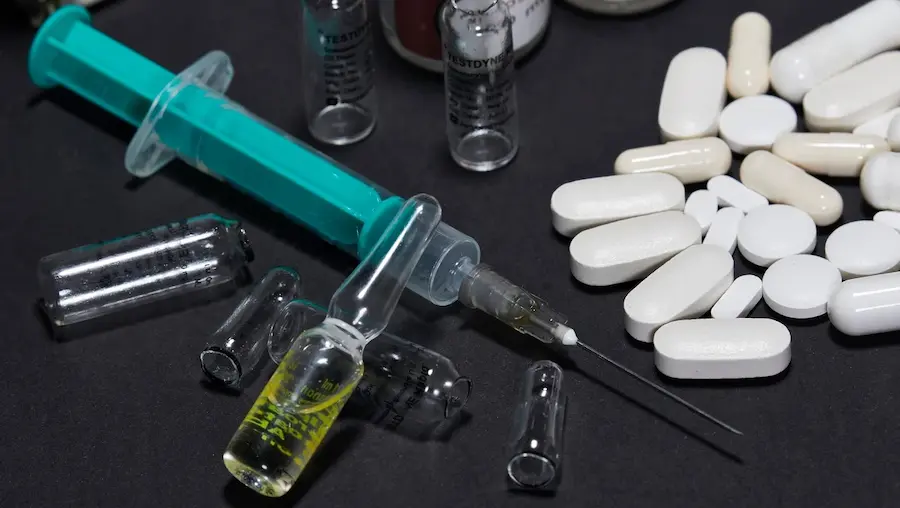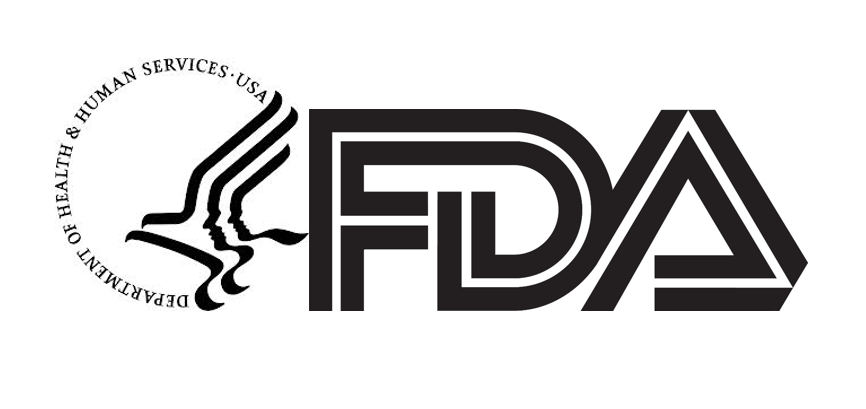Selective Androgen Receptor Modulators, or SARMs, represent a class of therapeutic compounds with properties akin to anabolic steroids, but with reduced androgenic properties. This distinction allows SARMs the advantage of androgen-receptor specificity, tissue selectivity, and the potential for more limited side effects. They are often touted as a safer alternative for muscle-building compared to traditional steroids and are becoming increasingly popular among bodybuilders and athletes. Despite the potential therapeutic benefits that come with their selective nature, awareness and understanding of their side effects are critical for users.
The SARMs side effects can vary considerably, with some compounds having minimal impacts, while others may pose more significant risks. Common side effects include suppression of natural testosterone production, changes in lipid profiles, and potential liver toxicity. The regulatory status of SARMs remains a hot topic, as many SARMs are not approved for human use by major drug regulatory bodies and are thus sold as research chemicals. Safety and research into these compounds are ongoing, with future directions aimed at understanding the long-term implications of their use.
Quick Summary
- SARMs have similar muscle-building properties to anabolic steroids but with potentially fewer side effects.
- Side effects such as testosterone suppression and liver toxicity are concerns with SARM usage.
- SARMs are not universally approved for human use and are subject to ongoing research regarding their safety.

Understanding SARMS
Selective Androgen Receptor Modulators (SARMs) are a class of therapeutic compounds with similar anabolic properties to anabolic steroids but with reduced androgenic effects. This section will provide a detailed understanding of SARMs, their mechanism of action, comparison with anabolic steroids, and their clinical applications.
Definition and Mechanism of Action
SARMs are compounds that bind to androgen receptors, which are found in various tissues throughout the body. Unlike steroids, which affect the whole body, SARMs are tissue selective, targeting muscle and bone without impacting other organs as significantly. Ligandrol (LGD-4033) and enobosarm (ostarine) are examples of SARMs that have been studied for their ability to promote muscle growth and bone health.
SARMs exert their effects by:
- Binding to androgen receptors in specific tissues.
- Acting as a ligand to the receptor, which either activates or inhibits the receptor’s actions.
- Modulating the genetic transcription process, which can lead to increased muscle mass and strength.
Comparing SARMS and Anabolic Steroids

Anabolic steroids are known for their strong anabolic effects but also for their significant androgenic side effects, affecting multiple systems within the body. SARMs, by contrast, aim to achieve targeted anabolic activity, which ideally results in fewer unwanted androgenic side effects.
Key differences include:
- Selectivity: SARMs selectively target muscles and bones, while anabolic steroids can have widespread effects on the body.
- Side effects: Anabolic steroids are associated with a range of side effects due to their androgenic nature, whereas SARMs aim to reduce these by being tissue selective.
Approved Uses and Clinical Applications
Currently, SARMs are not approved by the Food and Drug Administration (FDA) for any medical use, but they are under investigation in clinical trials for various potential clinical applications. The goal is to treat diseases that result in muscle wasting, such as cancer cachexia, osteoporosis, and frailty in the elderly.
Clinical applications under investigation include:
- Muscle wasting disorders: Treatment to prevent loss of muscle mass.
- Bone health: Potential to enhance bone density and strength.
- Frailty in elderly: Aims to improve strength and physical function.
In the research and development of SARMs, entities like ligandrol and enobosarm have shown promise in phase I and II clinical trials, indicating potential for future medicinal use.
References
- Clinical trials of enobosarm: https://www.clinicaltrials.gov/ct2/show/NCT02912260
- FDA statement on SARMs: https://www.fda.gov/news-events/fda-brief/fda-brief-fda-warns-against-using-sarms-bodybuilding-products
Potential Therapeutic Benefits

Selective Androgen Receptor Modulators (SARMs) have been under study for their potential to offer significant therapeutic benefits. Particularly, their influence on muscle mass, bone health, and aiding those with wasting conditions is of notable interest within medical research communities.
Muscle Mass and Strength Gains
SARMs have been highlighted for their ability to promote increased muscle mass and strength, primarily due to their anabolic effects. They aim to selectively target muscle and bone receptors without substantially affecting other parts of the body. This specificity could lead to significant gains in muscle mass and strength, which is particularly beneficial for individuals experiencing muscle atrophy conditions or looking to recover from muscle-related injuries.
- Increased Muscle Mass: Clinical studies have demonstrated the potential of SARMs to enhance lean muscle mass, with fewer side effects compared to traditional anabolics.
- Strength Gains: Research indicates that SARMs can potentially increase physical strength by accelerating muscle growth.
Osteoporosis and Bone Health
The impact of SARMs on bone health is a key area of investigation, especially in the context of osteoporosis prevention and treatment. The compounds can stimulate bone formation and increase bone density, offering a potential therapeutic advantage for individuals at risk of bone fractures and those suffering from osteoporosis.
- Prevention: Attempts to prevent the onset of bone-related diseases.
- Treatment: SARMs may improve bone strength and density, aiding in the treatment of osteoporosis.
Wasting Conditions and Cancer Patients
For cancer patients and individuals dealing with wasting conditions, SARMs represent a promising treatment avenue. They are being studied for their capacity to prevent muscle wasting and promote lean muscle mass maintenance, which can be a significant concern for this demographic.
- Wasting Prevention: SARMs could hinder the progression of muscle deterioration.
- Supporting Cancer Patients: There is potential for SARMs to help in maintaining a healthier weight and muscle status in patients undergoing cancer treatment.
References
Reference: Dalton JT. Therapeutic Promise of SARMs. The Endocrine Society. Retrieved from endocrine.org Reference: Segal S, Narayanan R, Dalton JT. Therapeutic Potential of the SARMs: Revisiting the androgen receptor for drug discovery. National Institutes of Health. Retrieved from nih.gov
Common SARMS Side Effects

Selective Androgen Receptor Modulators (SARMs) have been associated with a range of side effects varying from short-term adverse effects to potentially severe long-term health consequences. They specifically target androgen receptors and may impact various bodily functions.
Short-Term Adverse Effects
In the near term, individuals using SARMs may experience side effects that can affect day-to-day living. Key short-term adverse effects include:
- Acne
- Hair Loss
- Mood Swings
- Decreased testicular size
- Sexual dysfunction
For instance, mood swings might manifest as irritability or depression, and sexual dysfunction can include decreased libido or erectile dysfunction.
Long-Term Health Risks
The long-term consumption of SARMs can lead to more severe health risks. A notable concern is the potential increase in the likelihood of heart attacks and strokes. These cardiovascular risks stem from the possibility of SARMs altering lipid profiles and increasing blood pressure.
Furthermore, prolonged use may lead to infertility issues due to alterations in testicular function, which is particularly concerning for those aiming to maintain reproductive health.
Specific Organ Impacts
Various organs can be affected by the use of SARMs, especially with prolonged use. Notable organ-specific impacts include:
- Liver Injury: Evidence suggests that SARMs can lead to drug-induced liver injury, potentially escalating to liver failure.
- Heart: There is an associated risk of negative cardiovascular effects, including changes that may contribute to heart attack and stroke.
- Reproductive System: In male users, alterations to testicular size and function can lead to infertility and other reproductive system evaluations.
It is critical for users of SARMs to be aware of these potential side effects and to closely monitor their health under the guidance of a healthcare professional.
References
Regulatory Status and Safety Concerns

Selective Androgen Receptor Modulators (SARMs) have garnered attention due to their potential anabolic effects. Yet their regulatory status and associated safety concerns remain critical for public awareness.
FDA Stance and Legal Accessibility
The FDA has not approved any SARMs for human consumption. They are often marketed as dietary supplements but are regarded as unapproved drugs. In the United States, selling these substances for human use is illegal, and purchasing them often involves navigating through a gray market. Online platforms and social media sometimes serve as access points, where the lack of regulatory oversight can lead to an increased risk of counterfeit or adulterated products.
Doping and Athletic Concerns
SARMs are prohibited by the World Anti-Doping Agency (WADA) due to their performance-enhancing effects. Athletes caught doping with SARMs face suspensions and reputational damage. Despite the ban, instances of SARMs use in the athletic community continue, propelled by an anecdotal belief in their efficacy and a desire for competitive advantage. The misinformation surrounding their legality and safety contributes to their misuse in sports.
Consumer Awareness and Misinformation
The proliferation of misinformation, particularly through platforms such as Reddit, poses challenges to consumer awareness. An internet survey can reveal significant errors in the demographics of SARMs users, often due to a chi-square of poor information. Misconceptions about the effectiveness and safety of SARMs are widespread, and many individuals may not understand the potential side effects or legal implications of their use.
References
Misinformation on Reddit: https://www.reddit.com/r/sarmsourcetalk
WADA Prohibited List: https://www.wada-ama.org/en/content/what-is-prohibited
FDA on SARMs: https://www.fda.gov/consumers/consumer-updates/products-marketed-research-chemicals-are-not-fda-approved
Research and Future Directions

Selective Androgen Receptor Modulators (SARMs) have emerged as promising therapeutics in various medical conditions due to their targeting of androgen receptors with greater tissue selectivity than traditional anabolic androgenic steroids. This section examines the current state of SARM research and the potential for their development across multiple conditions.
Current Research in SARMS
Recent clinical trials have been focusing on evaluating the safety, efficacy, and pharmacokinetics of SARMs. For instance, studies involving healthy young men have observed the effects of SARMs on muscle mass and strength, providing insights that could be beneficial for treating muscle wasting conditions. Chen J et al. have contributed to the understanding of SARM metabolism and the implications for detecting SARM usage, crucial for anti-doping efforts (Chen J et al., Analytical Chemistry, DOI: 10.1021/ac4025377).
Research has also been directed at specific conditions, such as cachexia and benign prostatic hyperplasia. Dalton J et al. investigated the impact of nonsteroidal oral SARMs in patients with these conditions, highlighting the therapeutic potential and the importance of examining long-term effects (Dalton J, J Med Chem, DOI: 10.1021/jm401251j). The modulation of androgen receptors by SARMs without the adverse effects associated with DHT is a significant area of interest.
Potential for Development in Various Conditions
The development of SARMs for conditions such as prostate cancer, breast cancer, and male hypogonadism is a focal point of ongoing research. The ability of SARMs to act selectively opens possibilities for minimizing the side effects often associated with androgen therapies. As evidence, Thevis M and colleagues have explored the anabolic properties of SARMs that could mitigate muscle wasting observed in patients with HIV (Thevis M et al., Clinical Chemistry, DOI: 10.1373/clinchem.2015.239962).
The relationship between SARMs and fertility presents another area of interest, especially with regard to their impact on hypogonadism and the potential uses in treating conditions like stress urinary incontinence. Furthermore, given the prevalence of anabolic steroid abuse among teenagers, there is a pressing need to understand the full spectrum of SARM side effects, including the risk of death, when considering potential regulatory measures and educational programs to discourage misuse.
Conclusion

Selective Androgen Receptor Modulators (SARMs) remain a topic of interest in pharmacology and sports due to their potential to enhance athletic performance. Substances such as Cardarine are lauded for their ability to improve endurance, but they may trigger unwanted consequences, like elevated liver enzymes (ALT and AST), impacting liver health.
Concerns around sexual health are notable, as SARMs could induce impotence by disrupting hormonal balances, affecting levels of luteinizing hormone (LH) and follicle-stimulating hormone (FSH). The psychological dimension is not immune, with instances of increased anxiety reported among users.
While SARMs like Deca and Tren have been investigated for their beneficial effects on muscle strength and growth, the potential for altering DNA integrity cannot be disregarded. Adjunct therapies such as Finasteride, used to mitigate side effects, present their own set of complications and require careful consideration.
Despite the perceived efficacy of SARMs, the balance of risk and benefit remains a pivotal concern. Researchers, clinicians, and athletes continue to scrutinize the safety profile of SARMs, particularly their long-term impact on health.
- Liver Health Impact: Increase in liver enzymes (ALT, AST)
- Sexual Health Concerns: Potential for impotence; disruption in LH, FSH levels
- Psychological Effects: Cases of heightened anxiety
- Athletic Enhancement: Improvement in endurance and muscle strength
- Genetic Considerations: Possible alterations in DNA integrity
- Complementary Treatments: Complications associated with Finasteride
The ongoing investigation into SARMs highlights the need for thorough research and regulation to ensure user safety and well-being.
Frequently Asked Questions

Selective Androgen Receptor Modulators (SARMs) have specific consequences for users that warrant careful consideration. This section responds to commonly posed inquiries regarding their effects, legal status, and safe usage.
What are the potential long-term effects of using SARMs?
Long-term use of SARMs may lead to an increased risk of heart attack, stroke, and liver toxicity. Some studies suggest a potential to cause cancer, although this has not been conclusively established.
Can the use of SARMs lead to erectile dysfunction in men?
There are concerns that SARMs may impact sexual function, potentially leading to erectile dysfunction. However, more research is needed to confirm this effect.
Are there distinct side effects for women who use SARMs?
Women who use SARMs may experience virilization, which includes increased body hair, deepening of the voice, and menstrual irregularities due to the androgenic activity of these compounds.
What are the known impacts of SARMs on the human body?
The impacts of SARMs can include muscle mass increase and fat loss. However, they can also adversely affect cholesterol levels, liver function, and suppress natural testosterone production.
Is there a legal status concerning the sale and use of SARMs in the US?
In the United States, SARMs are considered experimental drugs and are not approved by the FDA for human consumption. Their sale is illegal when marketed for consumption, but they can be sold for research purposes.
How can SARMs be used safely, and what precautions should be taken?
To minimize risks, individuals considering SARMs should consult with a healthcare provider. It is crucial to source them from reputable providers and to be aware of the lack of regulation and potential for contaminated products.
References
(1) https://www.usada.org/sarms-information/
(2) https://www.fda.gov/newsevents/newsroom/pressannouncements/ucm585345.htm
(3) https://www.ncbi.nlm.nih.gov/pmc/articles/PMC4018048/
(4) https://www.ncbi.nlm.nih.gov/pmc/articles/PMC6264688/
(5) https://pubmed.ncbi.nlm.nih.gov/29179540/
(6) https://www.ncbi.nlm.nih.gov/pmc/articles/PMC6240568/
Dr. Grant Fourie, a specialist in male hormones, is based in Cape Town, South Africa. He provides comprehensive treatments for conditions related to low testosterone, such as erectile dysfunction, fatigue, and mood changes. His methods include hormone replacement therapy and other modern treatment options.
Contact me via email or phone to book personal appointment in my clinic: The Village Square, Cape Town - South Africa















